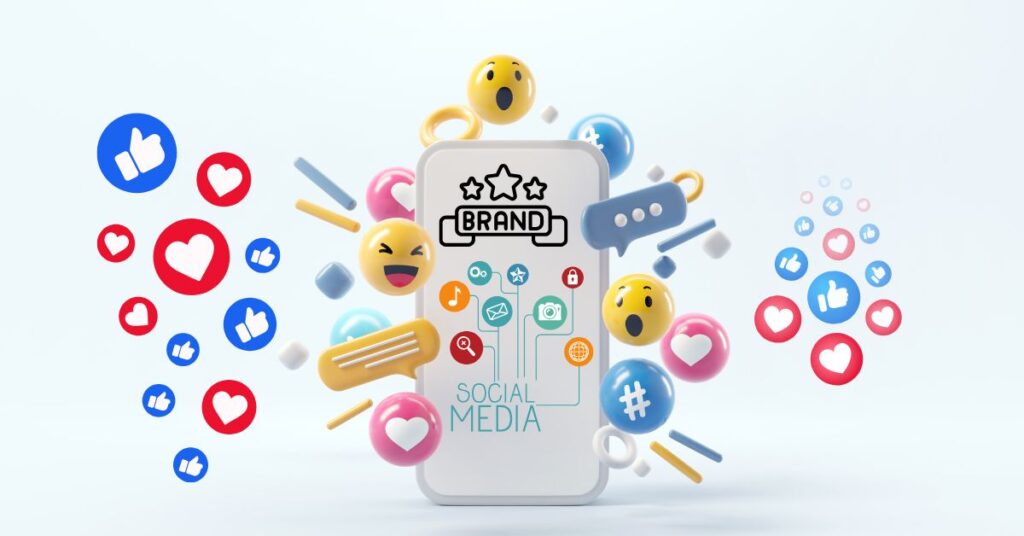10 Steps to Building Your Personal Brand on Social Media

In today’s digital world, your social media presence is your identity. Whether you’re an entrepreneur, freelancer, student, or professional, building a strong personal brand on social media helps you stand out, attract opportunities, and establish credibility. Personal branding isn’t just about posting regularly—it’s about creating a consistent, authentic, and strategic image that reflects who you are and what you represent. Here are 10 proven steps to help you build a powerful personal brand on social media that gets noticed and drives real growth.
Step 1: Define Your Personal Brand Identity
The first step in building a personal brand is to define who you are and what you stand for. Identify your strengths, passions, and core values. Ask yourself questions like—What do I want people to associate with my name? What problems do I solve? Once you’re clear about your purpose, decide how you want to present yourself online. For example, if you’re a digital marketer, focus your content on marketing insights, tools, and success stories. Clarity in your niche helps attract a targeted audience that genuinely connects with your message.
Step 2: Choose the Right Social Media Platforms
Not all platforms are suitable for every type of brand. LinkedIn is ideal for professionals and B2B content, Instagram works well for creative storytelling, YouTube for tutorials and vlogs, while X (Twitter) is best for thought leadership. Identify where your audience spends most of their time and focus your efforts there. It’s better to excel on two platforms than to be inconsistent on five. Your chosen platform should align with your content format and audience engagement style.

Step 3: Create a Consistent Visual Identity
Visual consistency is key to recognition. Your profile picture, color scheme, and bio tone should be uniform across platforms. Use professional photos, readable fonts, and a clear design style that reflects your brand’s personality. Create a recognizable logo or personal watermark for your visuals. Tools like Canva and Adobe Express can help you design consistent templates for posts, stories, and banners. A cohesive visual identity builds familiarity and trust among your audience.
Step 4: Optimize Your Profiles for Discoverability
Your profile is your first impression—make it count. Optimize your bio with relevant keywords that describe your skills or niche. For example, if you’re a social media strategist, include terms like “digital marketing,” “social media growth,” or “brand strategy.” Add links to your website or portfolio and use call-to-actions (CTAs) like “DM for collaborations” or “Explore my latest course.” Keep your descriptions concise yet impactful, and regularly update your profile with new achievements or milestones.
Step 5: Develop a Strong Content Strategy
Content is the foundation of your personal brand. Decide what type of content best showcases your expertise—tutorials, infographics, tips, case studies, or behind-the-scenes stories. Follow the 70-20-10 rule: 70% informative content, 20% engaging or personal content, and 10% promotional posts. Create a content calendar to stay consistent. Mix up formats such as carousels, reels, and blog snippets to keep your feed dynamic. Remember, valuable content attracts followers, while consistent value turns them into loyal fans.
Step 6: Use Storytelling to Connect Emotionally
People remember stories, not sales pitches. Use storytelling to make your brand human and relatable. Share your professional journey, challenges you’ve faced, lessons learned, and personal wins. Show authenticity—your audience connects with real experiences, not perfection. For instance, if you’re a designer, post about your creative process, the problems you solve for clients, and how your designs impact their brand. Emotional storytelling makes your brand memorable and inspires trust.
Step 7: Engage and Build Relationships
Building a personal brand isn’t just about broadcasting—it’s about engaging. Respond to comments, participate in discussions, and interact with your followers. Networking on platforms like LinkedIn or Instagram helps you connect with like-minded professionals, potential clients, or mentors. Collaborate with other creators in your niche to expand your reach. Genuine engagement builds community and positions you as approachable and trustworthy. Remember, social media rewards meaningful connections over passive visibility.
Step 8: Showcase Your Expertise and Achievements
Position yourself as a thought leader by sharing case studies, testimonials, and measurable results. Highlight your skills through tutorials, webinars, or short educational videos. If you’ve spoken at events, completed certifications, or achieved milestones, post about them strategically. This not only enhances your credibility but also demonstrates your growth journey. Using platforms like LinkedIn, you can regularly publish professional updates and long-form articles that show your expertise in action.
Step 9: Analyze, Improve, and Stay Consistent
Data is your best guide to improvement. Use platform analytics to measure engagement, reach, and audience demographics. Identify which posts perform best and why—was it the content type, timing, or topic? Use these insights to fine-tune your strategy. Consistency is equally important. Set realistic posting goals—whether it’s three times a week or daily—and stick to them. Remember, personal branding is a long-term investment, and consistency builds credibility over time.
Step 10: Keep Learning and Evolving
Social media trends and algorithms change constantly. To stay relevant, keep learning new strategies and tools. Experiment with emerging features like AI-driven content ideas, short-form videos, or live sessions. Follow industry leaders and stay updated on changes in audience preferences. Don’t hesitate to pivot your content if your goals evolve. Adaptability ensures your personal brand grows stronger and more authentic with time.

Pro Tips for Faster Personal Brand Growth
- Use AI Tools: Tools like ChatGPT, Copy.ai, and Jasper can help generate post ideas and captions quickly.
- Leverage Video Content: Videos increase engagement and humanize your brand.
- Repurpose Content: Turn one blog post into multiple reels, carousels, and quotes to maximize reach.
- Collaborate Strategically: Partner with influencers or experts in your field to gain credibility and followers.
- Stay Authentic: People connect with genuine voices—don’t try to sound like someone else.
Conclusion
Building a personal brand on social media isn’t about instant fame—it’s about consistent, meaningful presence. When done strategically, it helps you attract opportunities, clients, and recognition in your industry. By following these 10 steps—defining your identity, creating valuable content, engaging with your audience, and analyzing your growth—you can build a brand that truly reflects your values and expertise. To master the art of personal branding and digital growth, Digi Edu Learning offers specialized training programs that teach you how to use social media, AI tools, and marketing strategies effectively. With Digi Edu Learning, you can transform your online presence into a strong personal brand that stands out in today’s competitive digital world.







Leave a Reply